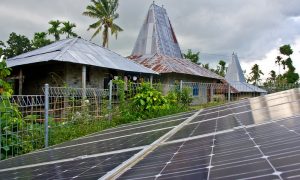Over the past two years, New Mandala authors have taken us deep into the stories behind many of Southeast Asia’s most pressing issues. From the unfolding COVID-19 pandemic, which we took as a major theme in 2020, to the coups, resistance and political violence that marked 2021, scholars, activists and practitioners from around the world have presented their research, observations and speculations on the region.
In 2022, New Mandala will continue to be a platform for scholarship on these important issues. But we will also seek to make a greater contribution to communicating research on the issue that increasingly demonstrates its intimate connection to the economic and geopolitical stability of the region, the human (and non-human) rights of all its inhabitants, and the very survival of life as we know it. Over the coming weeks New Mandala will bring readers a number of articles focused on environmental justice in Southeast Asia; looking at issues as diverse as indigenous land care in Myanmar, Indonesia’s potentially critical role in the development of renewable energy, hydro-power projects’ impact on cultural rights in Cambodia and the perilous relationship between coalmines and the people of Sumatra.
We intend to continue this important conversation throughout 2022 and invite submissions from our community on the most pressing environmental justice issues in the field. How are rural communities responding to climate induced pressures on food supply and livelihoods? What role are governments playing in perpetuating or mitigating threats to vulnerable ecosystems. How are urban societies dealing with pollution? What technologies are being applied to which problems? How is civil society collaborating with or resisting authorities on issues of environmental justice? Where does power lie and where is it shifting? What are the energy solutions for a safer future and what compromises do they entail? What contribution are primary producers, researchers, artists, policy makers, activists and intellectuals making to the theory and practice? Where does environmental justice intersect with gender rights, poverty alleviation, indigenous movements, land tenure, and cultural preservation?
 Facebook
Facebook  Twitter
Twitter  Soundcloud
Soundcloud  Youtube
Youtube  Rss
Rss 
